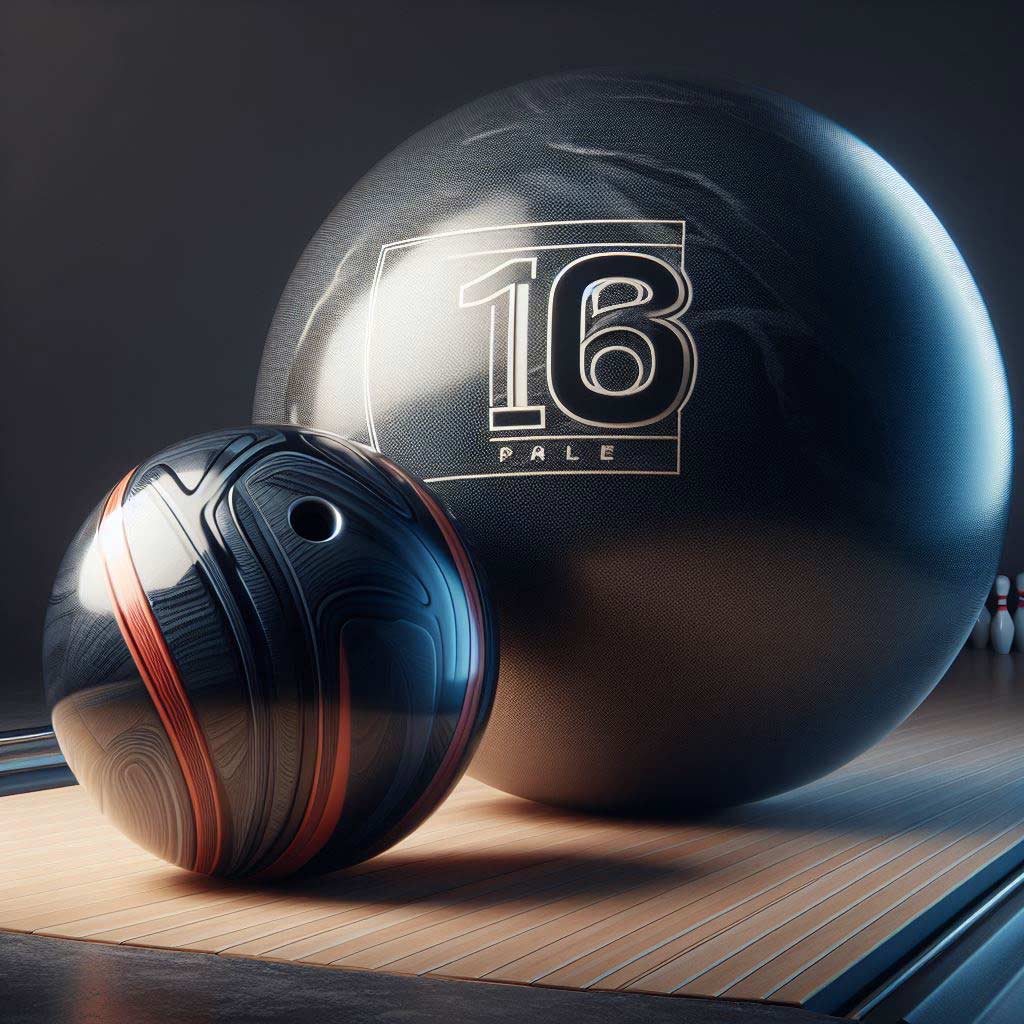When you picture a bowling ball, you probably imagine a heavy, solid ball that takes some muscle to lift and throw down the lane. But the reality is that bowling balls come in a much wider range of weights than many casual bowlers realize.
From ultralight options perfect for youth or senior players all the way up to heavy-duty balls used by professional and elite-level competitors, the weight of a bowling ball can have a major impact on your game.
In this comprehensive guide, we’ll explore the surprising spectrum of bowling ball weights, explain the factors that affect ball weight, and provide tips on how to choose the optimal weight for your skill level and playing style.
Whether you’re a complete beginner or a seasoned pro, understanding the nuances of bowling ball weights can help you take your game to the next level.
What is the Average Bowling Ball Weight?
The standard weight of a bowling ball used by most recreational and amateur players is between 10-16 pounds. This is considered the typical weight range for a full-size, adult-oriented bowling ball.
Bowling ball weights are measured in 2-pound increments, with common options being 8 lbs, 10 lbs, 12 lbs, 14 lbs, and 16 lbs. The weight of the ball is determined by its size and the materials used in its construction.
A full-size bowling ball has a diameter of approximately 8.5 inches. The weight of the ball comes from the dense core and outer shell materials, which are typically made from things like plastic, urethane, or reactive resin. Heavier materials like tungsten can also be used to increase the overall weight of the ball.
Most bowling alleys and pro shops will have a wide selection of bowling balls in this 10-16 lb weight range available for players to choose from and test out. Finding the right weight that you can comfortably control is an important part of improving your game.
Lightweight Bowling Balls (Under 10 lbs)
While the 10-16 lb range may be the standard, there are also plenty of lightweight bowling ball options available, particularly for youth bowlers, senior citizens, or anyone looking for a ball they can handle with ease.
Bowling balls can be manufactured as light as 6 lbs, though the most common lightweight options tend to fall in the 8-9 lb range. These featherlight balls are ideal for beginners, bowlers with limited strength, or youth/junior players who may struggle to lift and control heavier balls.
The main advantage of using a lightweight ball is that it requires less physical effort to pick up, swing, and release. This can be hugely beneficial for young bowlers or older players dealing with mobility or strength issues. Lightweight balls also tend to be easier to generate spin and hook with, making them a great choice for developing your technique.
Of course, the trade-off is that lighter balls generally don’t have the same power and momentum as their heavier counterparts. This means they may not be able to knock down pins with the same force. But for many recreational players, the improved control and ease of use of a lightweight ball often outweighs the slight reduction in power.
Some examples of popular lightweight bowling ball options include the Ebonite Impact at 8 lbs, the Hammer Black Widow Spare at 8 lbs, and the Storm Tropical Surge at 9 lbs. These balls are designed specifically with beginners, youth, and senior bowlers in mind.
Heavyweight Bowling Balls (Over 16 lbs)
At the other end of the spectrum, we have the heavyweight bowling balls preferred by professional and elite-level competitors. While the 10-16 lb range may be standard, some of the best bowlers in the world use balls weighing up to 16 lbs.
The primary reason professional and high-level bowlers use such heavy balls is to generate more power, momentum, and pin-carrying force. Heavier balls are able to maintain their speed and energy better through the pins, resulting in a more consistent and devastating strike shot.
Additionally, the extra weight of a 16 lb ball allows skilled bowlers to impart more hook and revolutions on the ball, creating sharper, more dramatic breaks and boosting their scoring potential. This level of ball control and power is essential for competing at the highest levels of the sport.
Of course, the downside of using a 16 lb ball is the immense physical strength and stamina required to wield it effectively. Picking up, swinging, and releasing a ball of that heft over and over again demands an exceptional level of upper body strength and technique. This is why heavyweight balls are really only practical for the most elite, experienced bowlers.
Some examples of popular 16 lb bowling ball models used by pros include the Motiv Jackal Ghost, the Storm Marvel Pearl, and the Roto Grip Hustle Ink. These balls leverage advanced core and cover stock technology to deliver maximum power and control in the hands of expert players.
Factors That Affect Bowling Ball Weight
While the 10-16 lb range may be considered the “standard” for adult bowling balls, the actual weight can vary quite a bit based on several key factors:
Materials Used in Ball Construction
The core and outer shell materials used to make a bowling ball have a big impact on its overall weight. Balls made from denser materials like urethane or reactive resin tend to be heavier than those with plastic/polyester shells.
Advanced bowling balls may also incorporate additional heavy materials like tungsten into the core to increase the weight and power potential. The tradeoff is that these premium balls also tend to be more expensive.
Ball Size/Diameter
The physical size of the bowling ball is another major determinant of its weight. A full-size 8.5 inch ball will naturally weigh more than a “house ball” or youth-oriented ball with a smaller 8 inch or even 7 inch diameter.
Larger balls simply require more raw materials to construct, leading to a higher overall weight. This is why many bowling alleys have a selection of different sized balls available to accommodate players of all ages and strength levels.
Additional Weight Factors
Beyond the core materials and ball size, there are a few other minor factors that can slightly influence the weight of a bowling ball:
- Drilling holes – The number and size of the finger/thumb holes drilled into the ball can shave off a small amount of weight.
- Ball engraving/graphics – Decorative elements added to the ball’s surface may add a negligible amount of weight.
- Moisture absorption – Balls can gain a small amount of weight over time as they absorb moisture from the environment.
Overall, these additional factors typically only account for 1 lb or less of variance in a ball’s weight. The materials and size are by far the biggest determinants.
Choosing the Right Bowling Ball Weight
With such a wide range of bowling ball weights available, how do you go about choosing the optimal weight for your skill level and playing style? Here are some key tips:
Consider Your Strength and Physical Abilities
The most important factor in selecting a bowling ball weight is being honest about your current strength and physical capabilities. Beginners, youth bowlers, seniors, and anyone with mobility or joint issues should opt for a lightweight ball in the 8-10 lb range that they can comfortably control.
More experienced and physically fit bowlers may be able to handle heavier 12-16 lb balls, which can provide more power and hook potential. But you should never choose a ball weight that is too heavy for you to swing and release properly.
Improper form and muscle strain from using an overly heavy ball can lead to injury and undermine your performance. Start light and work your way up as your strength and technique improve.
Match the Weight to Your Ball Speed
In addition to your physical abilities, the weight of the ball you choose should also complement your ball speed. Slower ball speeds typically require a heavier ball to generate enough momentum, while faster bowlers may benefit from a slightly lighter weight.
As a general rule of thumb:
- Slow speed bowlers (12-14 mph) – Use a 14-16 lb ball
- Medium speed bowlers (15-17 mph) – Use a 12-14 lb ball
- High speed bowlers (18+ mph) – Use a 10-12 lb ball
The heavier ball weight helps compensate for slower ball speed by adding more force behind each shot. Conversely, faster bowlers can generate sufficient power and momentum with a slightly lighter ball.
Of course, these are just general guidelines. The ideal weight will also depend on your individual technique, release, and overall ball control abilities. Experimenting with different weights is the best way to find your personal sweet spot.
Get Properly Fitted for the Right Weight
One of the most important steps in choosing the right bowling ball weight is getting properly fitted and tested at your local pro shop or bowling alley. An experienced staff member can assess your physical capabilities, ball speed, and playing style to recommend the optimal weight range.
They may also suggest trying out a few different ball weights to see which one feels most comfortable and natural for you to lift, swing, and release. Things like ball fit, balance, and overall ease of control should all factor into your decision.
Proper ball fitting is especially crucial for heavier 14-16 lb balls, which demand a high level of technique and muscle memory to use effectively. Having the right weight and fit can make a huge difference in your consistency and scoring potential.
Don’t Neglect Your Comfort and Enjoyment
At the end of the day, the most important factor in choosing a bowling ball weight is your own personal comfort and enjoyment of the game. While it’s important to find a weight that challenges you and helps improve your skills, you should never select a ball that feels overly burdensome or detracts from your overall experience.
The whole point of bowling is to have fun, so make sure the weight you choose allows you to focus on your technique and strategy rather than just muscling the ball down the lane. If a particular weight makes the game feel like a chore rather than a pleasurable activity, it’s probably not the right fit.
Take the time to experiment and find the sweet spot where you feel empowered, in control, and able to consistently deliver high-quality shots. Your ultimate goal should be selecting a ball weight that enhances your enjoyment of the sport.
Conclusion: Exploring the Full Range of Bowling Ball Weights
As we’ve discovered, bowling balls come in a surprisingly diverse range of weights – from featherlight 6-8 lb options perfect for youth and seniors all the way up to the 16 lb heavy hitters used by professional and elite-level players.
Understanding this wide spectrum of bowling ball weights, and how factors like materials, size, and your own physical capabilities influence the ideal weight, is crucial for taking your game to the next level.
Whether you’re a complete beginner or a seasoned pro, choosing the right ball weight can make a major difference in your consistency, control, and overall scoring potential.
So the next time you head to the bowling alley, don’t just assume the standard 10-16 lb balls are your only choice. Explore the full range of options, get properly fitted, and find the weight that allows you to bowl your best and have the most fun. Your strike shot will thank you.





